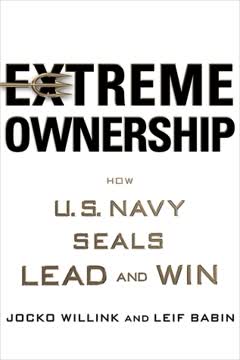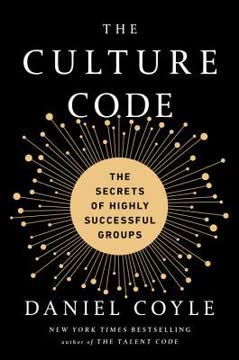मुख्य निष्कर्ष
1. सुरक्षा का निर्माण करें और समूह संस्कृति को मजबूत करें
संबंध बनाने वाले संकेतों में तीन मूलभूत गुण होते हैं: ऊर्जा: वे उस आदान-प्रदान में निवेश करते हैं जो हो रहा है, व्यक्तिगतता: वे व्यक्ति को अद्वितीय और मूल्यवान मानते हैं, भविष्य की ओर उन्मुखता: वे संकेत देते हैं कि संबंध जारी रहेगा।
संबंध प्रदर्शन को बढ़ावा देता है। समूह जो लगातार संबंध बनाने वाले संकेतों के माध्यम से मनोवैज्ञानिक सुरक्षा का निर्माण करते हैं, वे उन समूहों की तुलना में बेहतर प्रदर्शन करते हैं जो ऐसा नहीं करते। इन संकेतों में आंखों का संपर्क, शारीरिक निकटता, अनुकरण, बातचीत में बारी-बारी से बोलना, ध्यान से सुनना, और छोटे शिष्टाचार शामिल हैं। ये एक शक्तिशाली संदेश भेजते हैं: "आप यहाँ सुरक्षित हैं। हम एक भविष्य साझा करते हैं।"
संबंध बनाने के प्रमुख तरीके:
- सुनिश्चित करें कि सभी की आवाज़ हो
- अपेक्षाओं को स्पष्ट रूप से संप्रेषित करें
- नकारात्मक फीडबैक व्यक्तिगत रूप से दें
- बार-बार आभार व्यक्त करें
- बातचीत के लिए टकराव-समृद्ध स्थान बनाएं
2. संवेदनशीलता के चक्र विश्वास और सहयोग को बढ़ावा देते हैं
संवेदनशीलता का आदान-प्रदान, जिसे हम स्वाभाविक रूप से टालने की कोशिश करते हैं, वह मार्ग है जिसके माध्यम से विश्वासपूर्ण सहयोग का निर्माण होता है।
संवेदनशीलता संबंध बनाती है। जब टीम के सदस्य अपनी कमजोरियों को साझा करते हैं और मदद मांगते हैं, तो यह एक "संवेदनशीलता चक्र" बनाता है जो विश्वास और सहयोग को बढ़ावा देता है। यही कारण है कि साझा संघर्ष पैदा करने वाली गतिविधियाँ, जैसे कि सैन्य प्रशिक्षण अभ्यास, इतनी मजबूत बंधन बनाती हैं।
प्रभावी संवेदनशीलता चक्रों के तत्व:
- नेता पहले संवेदनशीलता दिखाते हैं
- दो प्रमुख क्षणों पर ध्यान केंद्रित करें: पहली संवेदनशीलता और पहली असहमति
- फीडबैक को सीखने के अवसर के रूप में फ्रेम करें, न कि निर्णय के रूप में
- खुली चर्चा और असहमति के लिए सुरक्षित स्थान बनाएं
3. साझा उद्देश्य समूह के व्यवहार को संरेखित करता है और प्रदर्शन को बढ़ावा देता है
हम मानते हैं कि हमारी पहली जिम्मेदारी डॉक्टरों, नर्सों और मरीजों के प्रति है; माताओं और पिताओं और सभी अन्य लोगों के प्रति जो हमारे उत्पादों और सेवाओं का उपयोग करते हैं।
उद्देश्य निर्णयों को मार्गदर्शित करता है। एक स्पष्ट साझा उद्देश्य, जैसे कि जॉनसन एंड जॉनसन का क्रेडो, संगठन के भीतर व्यवहार को संरेखित करता है। यह कठिन विकल्पों को नेविगेट करने के लिए एक उत्तर तारा प्रदान करता है। उद्देश्य को लगातार संकेतों के माध्यम से बनाया जाता है जो वर्तमान क्रियाओं को भविष्य के आदर्शों से जोड़ते हैं।
साझा उद्देश्य बनाने के तरीके:
- प्राथमिकताओं को स्पष्ट रूप से नामित और रैंक करें
- उद्देश्य और मूल्यों को अधिक संप्रेषित करें
- ऐसे अनुष्ठान बनाएं जो मूल आदर्शों को मजबूत करें
- दैनिक कार्यों को बड़े मिशन से जोड़ें
- नियमित रूप से उद्देश्य का परीक्षण और सुधार करें
4. नेता संवेदनशीलता का मॉडल बनाकर संस्कृति को आकार देते हैं और खुलापन बढ़ावा देते हैं
कूपर को एहसास होता है कि (1) टीमें समस्याओं को हल करने के लिए बेहतर स्थिति में होती हैं, और (2) एक शक्तिशाली व्यक्ति का सुझाव आमतौर पर माना जाता है।
नेता स्वर सेट करते हैं। प्रभावी नेता संवेदनशीलता का मॉडल बनाते हैं, मदद मांगते हैं, गलतियों को स्वीकार करते हैं, और मनोवैज्ञानिक सुरक्षा का निर्माण करते हैं। वे अपने टीमों को सशक्त बनाने पर ध्यान केंद्रित करते हैं न कि हर निर्णय को निर्देशित करने पर। यह दृष्टिकोण रचनात्मकता को अनलॉक करता है और स्वामित्व का निर्माण करता है।
खुलापन बढ़ाने के लिए नेतृत्व तकनीकें:
- आदेश देने के बजाय प्रश्न पूछें
- असहमति और वैकल्पिक दृष्टिकोण को प्रोत्साहित करें
- विफलताओं को सीखने के अवसर के रूप में मनाएं
- टीमों को समस्याओं को हल करने के लिए स्वायत्तता दें
- बिना सूक्ष्म प्रबंधन के समर्थन प्रदान करें
5. उच्च-उद्देश्य वाले वातावरण वर्तमान क्रियाओं को भविष्य के आदर्शों से जोड़ते हैं
उच्च-उद्देश्य वाले वातावरण छोटे, जीवंत संकेतों से भरे होते हैं जो वर्तमान क्षण और भविष्य के आदर्श के बीच एक लिंक बनाने के लिए डिज़ाइन किए गए हैं।
उद्देश्य क्रिया को प्रेरित करता है। सफल संस्कृतियाँ उच्च-उद्देश्य वाले वातावरण बनाती हैं जो लगातार वर्तमान प्रयासों और भविष्य के लक्ष्यों के बीच लिंक को मजबूत करती हैं। यह विशेष रूप से कठिन समय के दौरान अर्थ और प्रेरणा प्रदान करता है।
उच्च-उद्देश्य वाले वातावरण के तत्व:
- मिशन और मूल्यों के दृश्य अनुस्मारक
- प्रभाव को दर्शाने वाली कहानियाँ
- बड़े उद्देश्य से जुड़े स्पष्ट प्रदर्शन लक्ष्य
- लक्ष्यों की ओर प्रगति पर नियमित रूप से विचार
- मील के पत्थरों और उपलब्धियों का जश्न मनाना
6. सफल संस्कृतियाँ दक्षता और रचनात्मकता का संतुलन बनाती हैं
उन सभी वाक्यांशों के बारे में दिलचस्प बात यह है कि डैनी उन्हें कैसे व्यक्त करता है। वह इस बात को समझने में असाधारण है कि लोग हर सेकंड उसे देख रहे हैं, और वह हर सेकंड, हर दिन उन संदेशों को दे रहा है।
विभिन्न कौशलों के लिए विभिन्न दृष्टिकोण की आवश्यकता होती है। दक्षता कौशल स्पष्ट नियमों और पुनरावृत्ति से लाभान्वित होते हैं, जबकि रचनात्मक कौशल स्वायत्तता और समर्थन की आवश्यकता होती है। सफल संस्कृतियाँ उस प्रकार के प्रदर्शन के आधार पर अपने दृष्टिकोण को अनुकूलित करती हैं जिसे वे विकसित करना चाहते हैं।
दक्षता बनाने की रणनीतियाँ:
- स्पष्ट, यादगार ह्यूरिस्टिक्स बनाएं
- उच्च-पुनरावृत्ति प्रशिक्षण प्रदान करें
- उत्कृष्टता के रोल मॉडल को उजागर करें
रचनात्मकता को बढ़ावा देने की रणनीतियाँ:
- रचनात्मक स्वायत्तता की रक्षा करें
- प्रयोग और जोखिम लेने को प्रोत्साहित करें
- टीम की गतिशीलता और संरचना पर ध्यान केंद्रित करें
7. संकट के क्षण समूह के उद्देश्य और पहचान को स्पष्ट कर सकते हैं
सफल संस्कृतियों के साथ अंतर यह प्रतीत होता है कि वे संकट का उपयोग अपने उद्देश्य को स्पष्ट करने के लिए करते हैं।
कठिनाई पहचान बनाती है। कई मजबूत संस्कृतियाँ अपने मूल पहचान को उन संकट के क्षणों से जोड़ती हैं जिन्होंने उन्हें अपने उद्देश्य और मूल्यों को स्पष्ट करने के लिए मजबूर किया। ये क्षण समूह की साझा कथा का हिस्सा बन जाते हैं और भविष्य के व्यवहार को मार्गदर्शित करते हैं।
संकट का लाभ उठाने के तरीके:
- चुनौतियों को विकास के अवसर के रूप में फ्रेम करें
- कठिन समय के दौरान मूल्यों को मजबूत करें
- कठिनाई को पार करने से सीखे गए पाठों को कैद करें
- लचीलापन और अनुकूलनशीलता का जश्न मनाएं
- आवश्यक परिवर्तनों को प्रेरित करने के लिए संकट का उपयोग करें
8. सरल ह्यूरिस्टिक्स जटिल समूह व्यवहार को मार्गदर्शित करते हैं
हम मानते हैं कि क्योंकि हम जटिल हैं, इसलिए निर्णय लेने का तरीका भी जटिल है। लेकिन वास्तव में, हम बहुत सरल नियमों का उपयोग कर रहे हैं।
सरल नियम जटिल व्यवहार को सक्षम बनाते हैं। जैसे सरल नियम स्लाइम मोल्ड्स या चींटी कॉलोनियों के जटिल व्यवहार को मार्गदर्शित करते हैं, सफल मानव समूह अक्सर मार्गदर्शक सिद्धांतों या ह्यूरिस्टिक्स के एक छोटे सेट पर निर्भर करते हैं। ये स्पष्टता और संरेखण प्रदान करते हैं बिना अत्यधिक प्रतिबंधात्मक हुए।
प्रभावी ह्यूरिस्टिक्स की विशेषताएँ:
- सरल और यादगार
- विभिन्न परिस्थितियों में लागू होने योग्य
- समूह के मूल्यों और उद्देश्य के साथ संरेखित
- कहानियों और अभ्यास के माध्यम से नियमित रूप से मजबूत
- अनुभव और फीडबैक के आधार पर विकसित होते हैं
9. शारीरिक निकटता और बातचीत समूह की एकता को बढ़ावा देती है
सफल टीम बनाने में सबसे महत्वपूर्ण बात यह थी कि यह बुद्धिमत्ता और अनुभव से कम, और डेस्क के स्थान से अधिक संबंधित था।
निकटता संबंध बनाती है। शारीरिक निकटता और बार-बार बातचीत समूह की एकता और रचनात्मकता के निर्माण के लिए महत्वपूर्ण हैं। यही कारण है कि सफल संगठन टीम के सदस्यों के बीच "टकराव" को अधिकतम करने के लिए स्थानों को डिज़ाइन करते हैं।
निकटता का लाभ उठाने के तरीके:
- अनौपचारिक बातचीत के लिए साझा स्थान बनाएं
- ओवरलैप समय बढ़ाने के लिए कार्यक्रमों को संरेखित करें
- भौतिक दूरी को पाटने के लिए प्रौद्योगिकी का उपयोग करें
- क्रॉस-फंक्शनल परियोजनाओं और टीमों को प्रोत्साहित करें
- नियमित सामाजिक कार्यक्रमों और टीम-बिल्डिंग गतिविधियों का आयोजन करें
10. निरंतर फीडबैक और सुधार नवाचार को बढ़ावा देते हैं
सभी फिल्में पहले खराब होती हैं। कुछ तो बेहद खराब होती हैं। उदाहरण के लिए, "फ्रोजन" और "बिग हीरो 6" पूरी तरह से आपदा थीं। कहानियाँ सपाट थीं, पात्र मौजूद नहीं थे। वे बुरे थे।
गंदे मध्य को अपनाएं। नवाचार के लिए असंपूर्ण विचारों से शुरू करने और उन्हें फीडबैक और पुनरावृत्ति के माध्यम से लगातार सुधारने की इच्छा की आवश्यकता होती है। सफल रचनात्मक संस्कृतियाँ ईमानदार आलोचना और सुधार के लिए नियमित अवसर बनाती हैं।
प्रभावी फीडबैक सिस्टम के प्रमुख तत्व:
- ईमानदार आलोचना के लिए मनोवैज्ञानिक सुरक्षा बनाएं
- विचार उत्पन्न करने को मूल्यांकन से अलग करें
- विशिष्ट, क्रियाशील फीडबैक पर ध्यान केंद्रित करें
- त्वरित प्रोटोटाइपिंग और प्रयोग को प्रोत्साहित करें
- केवल परिणामों के बजाय सीखने और सुधार का जश्न मनाएं
अंतिम अपडेट:
FAQ
What's "The Culture Code" about?
- Group Success: "The Culture Code" by Daniel Coyle explores the secrets behind highly successful groups, examining how they create cultures that foster collaboration and achievement.
- Three Skills: The book identifies three key skills that drive successful group cultures: building safety, sharing vulnerability, and establishing purpose.
- Real-World Examples: Coyle provides insights from various successful groups, including special-ops military units, sports teams, and innovative companies, to illustrate how these skills are applied in practice.
- Practical Guidance: The book offers practical advice and strategies for leaders and members of any group to enhance their culture and improve performance.
Why should I read "The Culture Code"?
- Improve Team Dynamics: The book provides valuable insights into improving team dynamics and fostering a culture of trust and cooperation.
- Actionable Strategies: It offers actionable strategies that can be applied to any group setting, from corporate teams to sports teams and beyond.
- Real-Life Success Stories: Coyle uses real-life success stories to illustrate the principles, making the concepts relatable and easy to understand.
- Enhance Leadership Skills: Readers can enhance their leadership skills by learning how to create environments that encourage innovation and collaboration.
What are the key takeaways of "The Culture Code"?
- Safety is Crucial: Building a sense of safety within a group is essential for fostering trust and open communication.
- Vulnerability Leads to Trust: Sharing vulnerability is a powerful way to build trust and cooperation among group members.
- Purpose Drives Performance: Establishing a clear and compelling purpose helps align group efforts and motivates members to achieve common goals.
- Continuous Learning: Successful groups are constantly learning and adapting, using feedback and reflection to improve.
How does Daniel Coyle define "building safety" in "The Culture Code"?
- Connection Signals: Building safety involves sending clear signals of connection and belonging to create a secure environment.
- Nonverbal Cues: Nonverbal cues such as eye contact, body language, and tone of voice play a significant role in establishing safety.
- Open Communication: Encouraging open communication and active listening helps reinforce a sense of safety within the group.
- Inclusive Environment: Creating an inclusive environment where everyone feels valued and heard is key to building safety.
What is the "vulnerability loop" concept in "The Culture Code"?
- Exchange of Vulnerability: The vulnerability loop is a shared exchange of openness that builds trust and cooperation within a group.
- Five Steps: It involves five steps: one person signals vulnerability, the other detects it, responds with their own vulnerability, the first person detects this, and trust is established.
- Contagious Effect: Vulnerability loops are contagious, spreading trust and cooperation throughout the group.
- Foundation of Trust: These loops are foundational for creating a culture where members feel safe to take risks and collaborate.
How does "The Culture Code" suggest establishing purpose in a group?
- Clear Goals: Establishing purpose involves setting clear, compelling goals that align with the group's values and mission.
- Consistent Messaging: Purpose is reinforced through consistent messaging and storytelling that connects daily activities to the larger mission.
- Role Clarity: Ensuring that each member understands their role and how it contributes to the group's purpose is crucial.
- Engagement and Motivation: A strong sense of purpose engages and motivates group members, driving them to achieve shared objectives.
What are some real-world examples used in "The Culture Code"?
- Navy SEALs: The book examines how Navy SEALs build trust and cooperation through rigorous training and shared vulnerability.
- Pixar: Coyle explores how Pixar fosters creativity and collaboration through open feedback and a strong sense of purpose.
- Google: The book highlights Google's culture of innovation and safety, which encourages employees to take risks and share ideas.
- Zappos: Zappos is used as an example of a company that prioritizes employee happiness and customer service to create a strong culture.
What are the best quotes from "The Culture Code" and what do they mean?
- "Safety is not mere emotional weather but rather the foundation on which strong culture is built." This quote emphasizes the importance of creating a safe environment as the basis for a successful group culture.
- "Vulnerability doesn’t come after trust—it precedes it." This highlights the idea that sharing vulnerability is a prerequisite for building trust within a group.
- "Culture is a set of living relationships working toward a shared goal." This quote defines culture as dynamic and relational, focused on achieving common objectives.
- "The goal needs to be to get the team right, get them moving in the right direction, and get them to see where they are making mistakes and where they are succeeding." This underscores the importance of team dynamics and continuous improvement.
How does "The Culture Code" address the role of leadership in successful groups?
- Modeling Behavior: Leaders play a crucial role by modeling the behaviors they want to see in their group, such as openness and vulnerability.
- Creating Safe Environments: Effective leaders create environments where members feel safe to express ideas and take risks.
- Facilitating Purpose: Leaders help establish and communicate the group's purpose, aligning efforts toward common goals.
- Encouraging Feedback: Successful leaders encourage feedback and reflection, fostering a culture of continuous learning and improvement.
What practical strategies does "The Culture Code" offer for improving group culture?
- Overcommunicate Listening: Actively listen and engage with group members to reinforce a sense of safety and connection.
- Embrace Vulnerability: Encourage sharing of vulnerabilities to build trust and cooperation within the group.
- Use Catchphrases: Develop and use catchphrases to reinforce the group's purpose and values consistently.
- Conduct After-Action Reviews: Implement regular reviews to reflect on performance, learn from mistakes, and improve.
How does "The Culture Code" differentiate between proficiency and creativity in group settings?
- Proficiency Focus: Proficiency involves delivering consistent, reliable performance and is supported by clear goals and rules.
- Creativity Focus: Creativity requires exploration and innovation, supported by autonomy and a safe environment for experimentation.
- Different Approaches: Building purpose for proficiency involves clear direction and repetition, while creativity requires support and flexibility.
- Balancing Both: Successful groups often balance proficiency and creativity, tailoring their approach to the specific needs of each area.
What is the significance of "high-purpose environments" in "The Culture Code"?
- Purposeful Signals: High-purpose environments are filled with signals that connect present actions to future goals, guiding group behavior.
- Consistent Messaging: These environments use consistent messaging to reinforce the group's mission and values.
- Engagement and Motivation: A strong sense of purpose engages and motivates group members, driving them to achieve shared objectives.
- Cultural Cohesion: High-purpose environments foster cultural cohesion, aligning individual efforts with the group's overarching goals.
समीक्षाएं
द कल्चर कोड को प्रभावशाली कहानियों और प्रभावी टीम संस्कृतियों के निर्माण पर अंतर्दृष्टियों के लिए ज्यादातर सकारात्मक समीक्षाएँ मिलती हैं। पाठक मनोवैज्ञानिक सुरक्षा, संवेदनशीलता और साझा उद्देश्य को बढ़ावा देने के लिए व्यावहारिक सुझावों की सराहना करते हैं। कुछ लोग इस पुस्तक की आलोचना करते हैं क्योंकि इसमें उदाहरणों में विविधता की कमी है और यह मुख्य रूप से किस्सों पर निर्भर करती है। कई पाठक इसे नेताओं और टीम के सदस्यों के लिए उपयोगी मानते हैं, हालांकि कुछ इसे बुनियादी या अत्यधिक सरल मानते हैं। पुस्तक का विश्वास और संबंध बनाने के वातावरण पर जोर कई पाठकों के साथ गूंजता है, जो इसे विभिन्न संगठनात्मक सेटिंग्स में लागू करने योग्य पाते हैं।
Similar Books

















